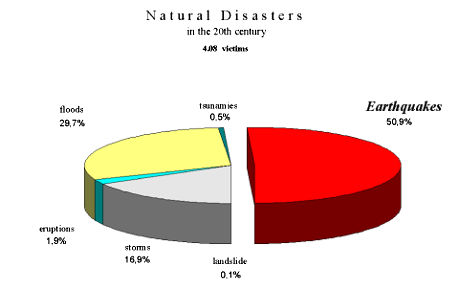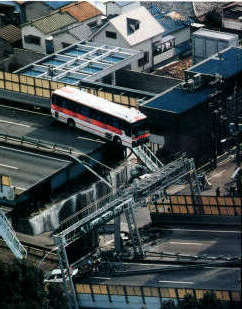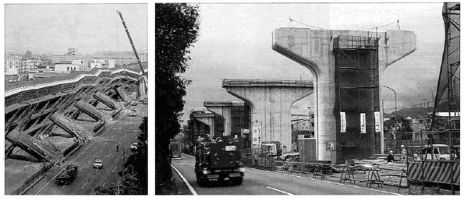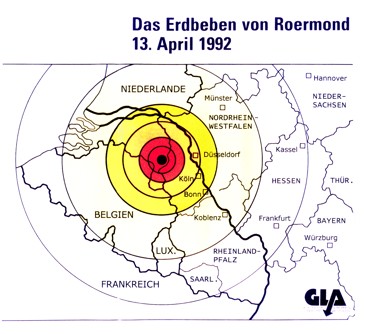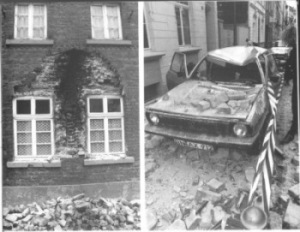1.3 Earthquakes as natural disasters
As important as earthquake waves are to our exploration of the inner workings of the earth (more on this subject in chapter 2), as destructive and unpredictable they remain even in our highly technical age.
More than half of all deaths that are caused by natural disasters are the consequence of earthquakes. Many of us still remember the news of the terrible earthquake in Kobe, which hit Japan in 1995.
- In twenty seconds the force of eight Hiroshima bombs was released.
- More than 6000 people died.
- Almost 50,000 homes were leveled to the ground.
- The extent of the damage was estimated at 30 billion dollars.
The only existing possibility to live with earthquakes is to build in an earthquake safe way.
But even in Europe earthquakes occur that can cause significant damage.
Amongst the German readers of this homepage there may be some who were torn from their sleep on the 13th April 1992 by the earthquake in Roermond in Belgium in the early hours of the morning. Even as far away as Bonn the quake was felt and tiles feel off roofs.
